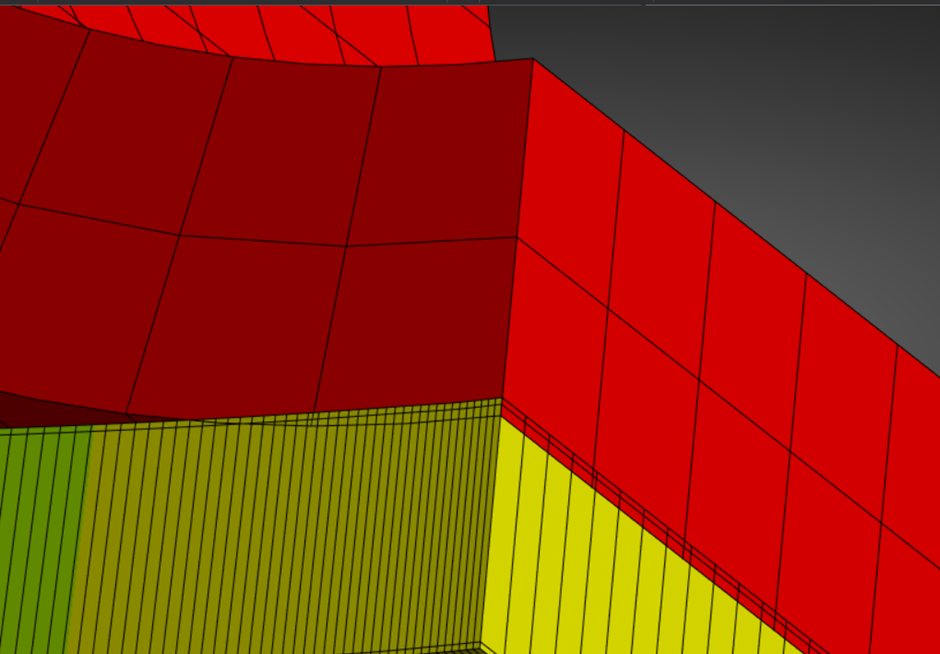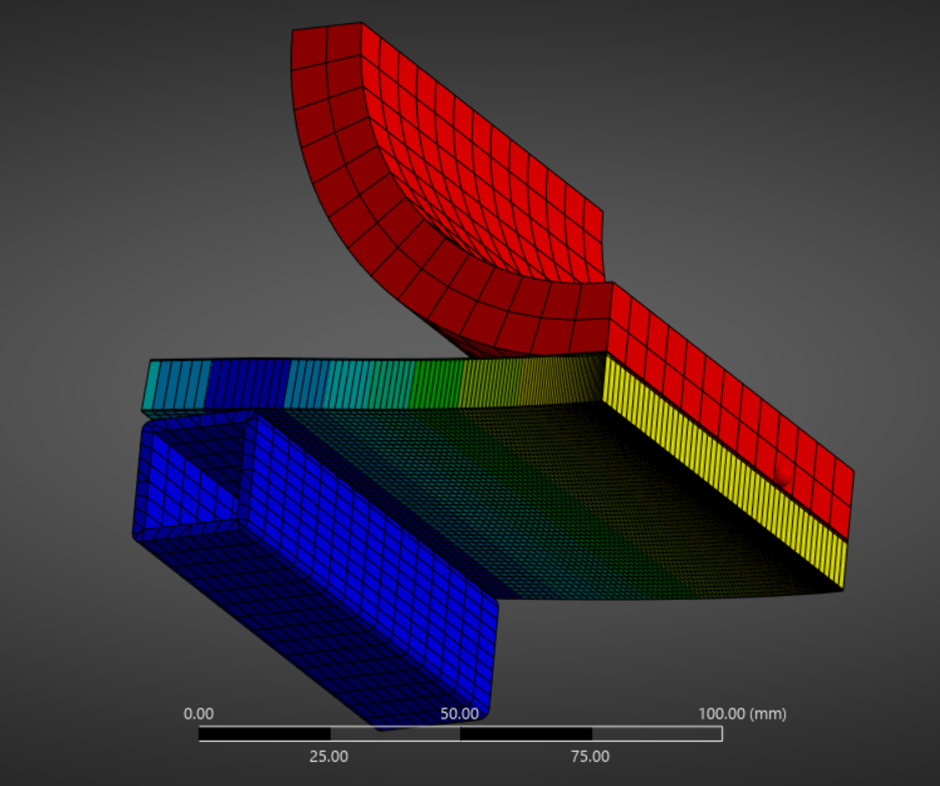-
-
February 4, 2025 at 3:22 pm
2640819G
SubscriberHi all,
Been attempting to simulate a 3 point bend test for a composite plate, but so far the numbers are a bit off the real life results. While some material discrepancies remain, one of the major culprits behind the error in my sim seems to be this strange merging that happens between the composite test piece and the moving rig - see pic of the deformation.
I chose to use a remote displacement as that was what was used in the real life test - I've attempted to solve by messing with the normal stiffness factor and switching from augmented lagrange to nodal-normal however the results gleaned from the latter were more unsatisfactory and the former did not solve the merging geometry problem. I’m using a basic inserted contact set for the face of the curved push piece and the composite plate below it, which I suspect to be the crux of the issue, but I am unsure as to how to approach the problem, especially as I am unfamiliar with ACP. Any assistance would be welcome.
-
February 7, 2025 at 2:07 pm
Govindan Nagappan
Ansys EmployeeIs there initial penetration in the geometry? If so, make sure you move the body to remove it.
Mesh appears very coarse in one component. Use similar size meshes in contact surfaces and see if it helps
Switch contact and target faces. or try symmetric behavior in details of contact and see if it helps
What results are off? You can check the results just on the composite part. By default, autoscale is used for results. See if you can use tru scale to check penetration. You can also plot contact results - status, penetration, gap etc and see if there is true penetration
-
- You must be logged in to reply to this topic.



-
2778
-
965
-
841
-
599
-
591

© 2025 Copyright ANSYS, Inc. All rights reserved.







